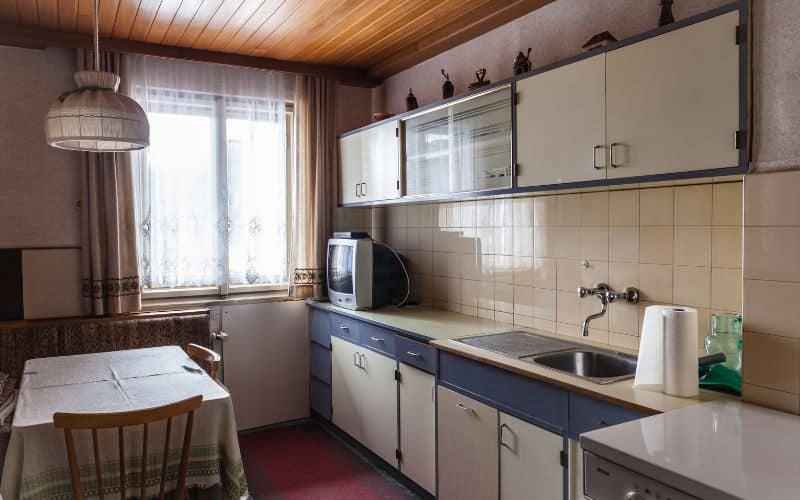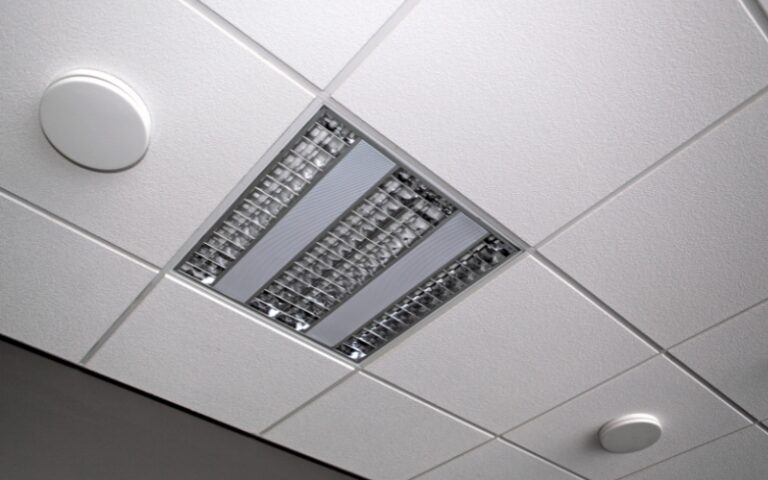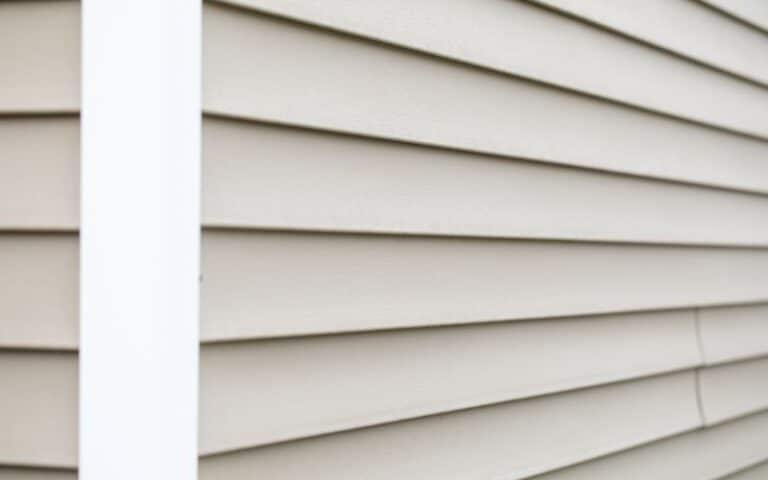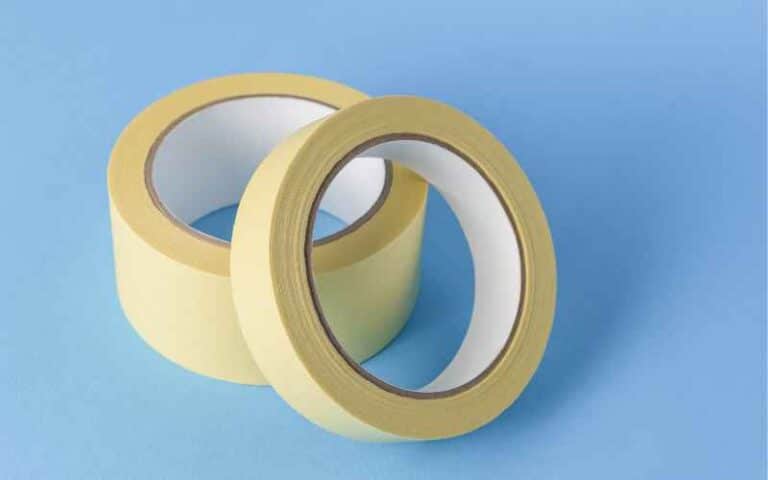To the untrained eye, drywall might look the same. However, if you’re not careful while installing, you might make the grave mistake of installing a material unsuitable for your kitchen.
Before installing drywall in your house, it’s important to know their specifications and what environments they are suited to.
Hence, can you use regular drywall in a kitchen?
No, you can’t use regular drywall in your kitchen. The most crucial criterion for installing drywall in an environment is humidity. Regular drywall is firmly against getting wet because its architecture doesn’t support humidity. Hence, it is illogical to use regular drywall in this space since it is almost always humid.
Drywall can be tricky for someone with little knowledge of its architecture.
Even those who work with this material need to update their knowledge banks every once in a while.
Hence, this article will help you understand why regular drywall isn’t suitable for a kitchen.
Furthermore, you will also learn what variant of drywall is best suited for a kitchen.
Ready for a Drywall Quiz?
Can I Use Normal Drywall in a Kitchen?

No, you can’t. The kitchen is the worst part of your house to install regular drywall because it doesn’t support humidity.
Your kitchen is constantly humid because of cooking activities. Hence, fixing regular drywall in the kitchen will damage the drywall.
If water splashes on the drywall and gets into it, it becomes humid. The end product of this is mold. Your drywall will begin to grow and develop molds.
You may use regular drywall in your kitchen. However, you will end up ruining your kitchen’s material and aesthetics.
You can take the chance to fix regular drywall in your kitchen, but you have to deal with molds when they start to form.
Regular drywall will be suitable for any part of your home, just not your kitchen.
It would be best if you went for standard drywalls that are water and mold resistant.
Installing these types of drywalls in your kitchen will save you a lot of money and hassle.
There are some reasons why regular drywall is not suitable for the kitchen.
Here are the differences between standard drywall and regular drywall and why standard drywall is better for kitchen use:
| Standard Drywall | Regular Drywall |
|---|---|
| Gypsum interior, which is mold resistant | The paper interior which supports the growth of molds |
| The layers of standard drywall resist water entry | The layers of regular drywall allow water entry |
What Type of Drywall Should Be Used in a Kitchen?
The best type of drywall to install in your kitchen is mold-resistant. The type of drywall that fits the build the most is the “green board.”
Manufacturers call it the green board because of its water-resisting properties. Hence, you won’t have to deal with molds if you install this drywall.
The difference between a green board and regular drywall is you can install the green board in any part of the house, and it will perform excellently.
You don’t have to fear molds growing on the drywall since it is water resistant.
You can install regular drywall in places like your room, basement, and living room, but don’t install it in your kitchen.
If you’re unsure of what regular drywall looks like, it’s a board that has a white outer layer.
Hence, construction workers call it the “whiteboard.” Color codes are essential in differentiating these boards.
If you ever need to remember the name of the drywall you want, you can use their colors to differentiate them.
Furthermore, you will be ahead when identifying the best drywall for your project.
Do I Need Mold-resistant Drywall in the Kitchen?
Yes, you do.
Your kitchen walls are exposed to moisture constantly, especially if you cook often. Hence, it would be best to have mold-resistant drywall in your kitchen.
If you install drywall that doesn’t have mold-resistant properties, you’ll spend a lot of money trying to fix it when mold starts growing.
Fixing water-resistant drywall in your kitchen is the best way to prevent mold growth.
However, one bad side of mold-resistant drywall is the price tag. Standard drywall is usually more expensive than regular drywall.
The price difference is understandable since standard drywall offers more protection and durability.
However, don’t be tempted to go for regular drywall for your kitchen. You’ll spend more money to maintain it than if you had gone for standard drywall.
The price tag might be a little hefty, but it beats replacing mold-affected drywall every month.
There are different mold-resistant drywall on the market.
However, contractors most commonly use these two standard drywall:
#1. Fiberglass Facing Drywall
Fiberglass-facing drywall is a mold-resistant drywall that is non-organic. Hence, there is no chance for a mold to grow and develop on the standard drywall.
Organic materials serve as food for molds, and since this standard drywall isn’t made from organic materials, molds won’t survive on this type of drywall.
Furthermore, the fiberglass-facing drywall has dual functionality. First, it can act as facing and backing drywall panels.
#2. Homogenous Mold-Resistant Drywall
Manufacturers of this drywall named it “homogenous” because it is made entirely of gypsum.
No other material besides gypsum is present in the chemical composition of this standard drywall.
Since there are no other organic materials like layers of paper in play, this standard drywall won’t retain water.
The retention of water by drywall is the leading factor in mold growth and development.
Since there is no water retention, no molds will grow on this standard drywall.
How Thick Should Kitchen Drywall Be?
How thick your kitchen drywall should be is totally up to you. It depends on your budget and what you’re looking to create.
Any successful drywall project begins with knowing what thickness should be used and where. Other criteria like length and width are also critical for this DIY project.
Like any other building material, there are standard measurements builders use for different applications.
While doing this project, you should also consider the building code in that area.
In the following sections, I will outline a couple of drywall thicknesses you can use for your kitchen and their benefits.
Remember that the choice remains with you. Hence, choose which thickness works best for you.
#1. ¼ Inch Drywall
The ¼-inch drywall is the thinnest thickness available on the market.
Since it is the thinnest drywall thickness on the market, it makes this drywall perfect for kitchen areas requiring flexible, lightweight drywall panels.
Contractors often use this drywall to cover up pre-existing drywall panels to improve their appearance and strength.
If your kitchen drywall is getting out of shape, use the ¼ inch drywall to cover it up.
#2. ⅜ Inch Drywall
If you’re looking for thicker drywall for your curved kitchen wall, the ⅜ inch drywall is also an excellent option for you to use.
The ⅜ inch drywall is also ideal for replacing old drywall sheets. However, it might be too big to use if you want to fix it atop pre-existing drywall.
In addition, ⅜ inch drywall is perfect for patching holes that pop up in drywall.
#3. ½ Inch Drywall
Builders most often use ½ inch as a standard drywall thickness. That’s because this drywall has vast applications.
However, the ½ inch drywall performs best on walls and ceilings. The thickness might be a little too much to use for curved walls without breaking a sweat.
Since construction workers use ½ inch walls most, they come in various lengths and widths.
Most DIY enthusiasts consider this drywall thickness the best option for homes because they are easy to hang.
#4. ⅝ Inch Drywall
The ⅝ inch drywall is versatile. It is an excellent option for ceilings because of its strength.
It is perfect for your kitchen since it prevents sagging between ceiling joists. Also, this drywall will be excellent since your kitchen is almost always humid.
Furthermore, it is suitable for kitchen walls, especially parts where your kitchen shares interior walls.
It is also a good choice because this thickness is fire-resistant. So you don’t want your kitchen walls catching on fire.
In addition, ⅝ inch drywall also comes in moisture-resistant panels.
FAQs
How Do You Know Which Drywall Thickness You Need?
If you want to work on interior walls, ½ inch drywall is best for ceilings, while ⅝ inch drywall is best.
What Is the Actual Thickness of Drywall?
Ensure you purchase your drywall from reputable brands. Hence, if you ask for a ½ inch of drywall, it is almost certain that it’ll be nothing short.






